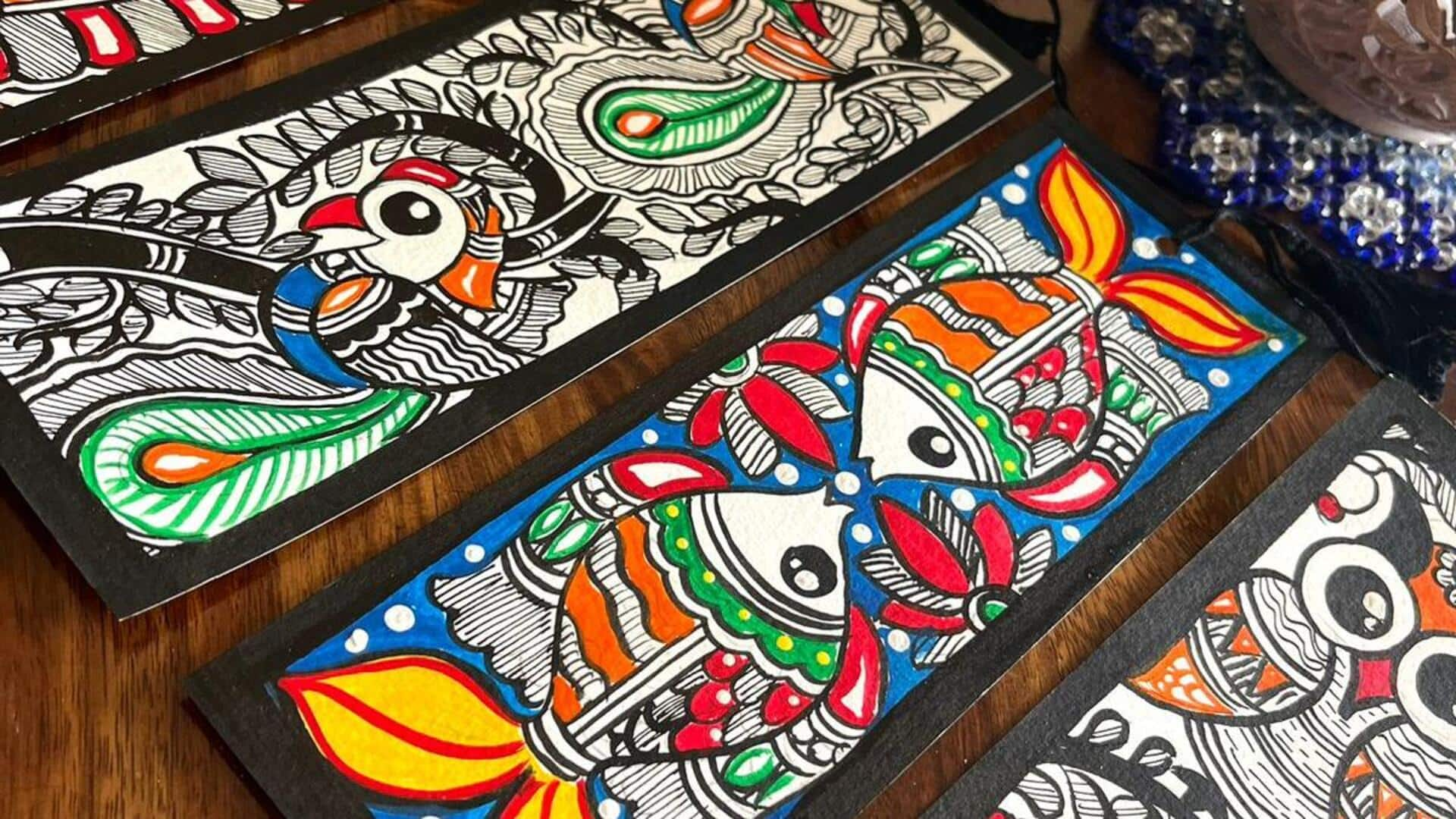
Explore Madhubani: An ancient Indian folk painting
What's the story
Madhubani painting, or Mithila art, is a traditional Indian folk art form that hails from Bihar's Mithila region. The ancient art form is known for its detailed patterns and bright colors, frequently showcasing nature, mythology and social happenings. Over the years, Madhubani has strayed from its traditionalism to occupy a place in modern art spaces. Here's how Madhubani painting transformed and enthralls everyone worldwide.
#1
The origins of Madhubani art
Madhubani painting can be traced back to at least the 14th century when it was mostly done by women on the walls of their homes on festivals and special occasions. Traditionally, the paintings were made with natural dyes and pigments from plants and minerals. The themes usually revolved around nature and daily life activities. This rich cultural heritage has been handed down through generations, keeping its unique style intact.
#2
Techniques used in modern Madhubani
While modern artists have evolved the traditional techniques and used new materials such as acrylics and canvas instead of mud walls or handmade paper, the essence still remains intact. Artists still stick to detailed line work with brushes or nib pens for precision. They still use natural motifs like fish, birds, trees, and geometric patterns denoting prosperity and fertility.
#3
Contemporary applications of Madhubani art
Today's artists are experimenting with new ways of incorporating Madhubani into mediums other than paper or canvas. You will find it decorating fabrics like sarees or scarves as well as home decor items like lampshades or cushion covers. Some even try their hands at the digital medium to create virtual galleries to display this age-old art form to the world.
Tip 1
Tips for appreciating Madhubani art
Next time you see Madhubani artworks online or at an exhibition, take a moment to look closely at the intricacy behind every piece. Observe how every element tells the other side of a story through symbolism deeply ingrained in culture. And yet, it is re-imagined artistically by contemporary practitioners who add a fresh perspective without losing the authenticity of this beloved folk tradition. It dates back centuries ago to India's heartland regions.